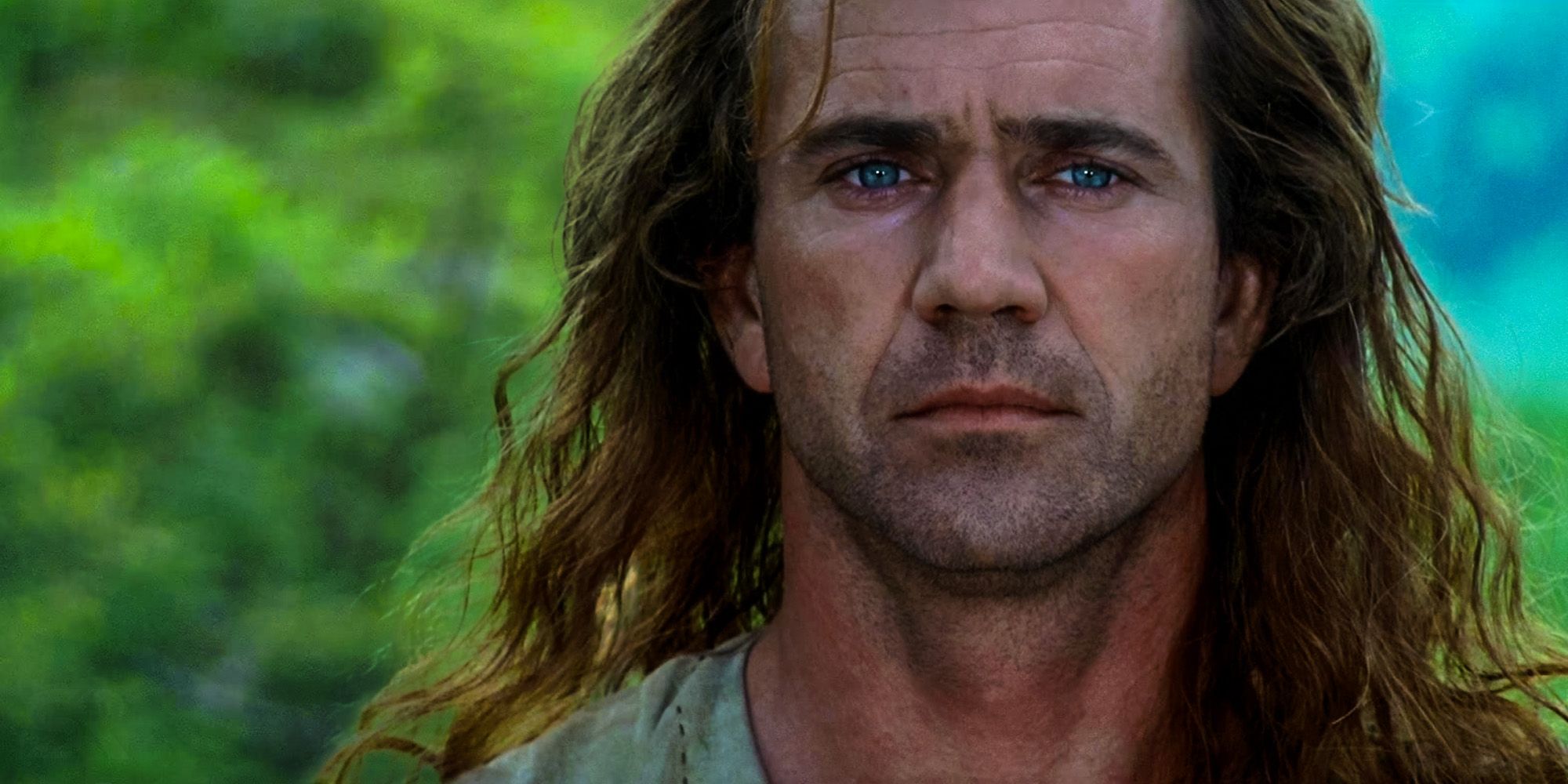Braveheart‘s Battle of Stirling Bridge is iconic, and the blue face paint is one of the most remembered parts of the film, but why did the Scots paint their faces blue? Braveheart is based on a true story, but the film has been criticized for being somewhat historically inaccurate. Like Braveheart‘s story, the aesthetic of blue face paint has been thoroughly examined through historical and creative lenses, all for the purpose of trying to figure out exactly why the Scots use blue face paint in Braveheart.
Braveheart follows the real-life historical figure Sir William Wallace (Mel Gibson) as he leads the Scots against the English in the First War of Scottish Independence. Releasing in 1995, Braveheart has persisted in pop-culture ethos, being nominated for many awards, constantly being parodied and homaged, and spawning a 2019 spin-off film. Braveheart has even inspired movies like The Northman, The Patriot, and other historical war dramas. While Braveheart does take some pretty strong creative liberties, it is still considered to be a fantastic film by many, maintaining an 85% audience score on Rotten Tomatoes.
Braveheart is filled with intense action scenes, but one of the most iconic is the Battle of Stirling Bridge. Before engaging in the battle with the English, who were led by commander Cheltham, many of the Scots apply blue war paint to their faces. In the story of the film, it isn’t explicitly stated why they do this. However, there are some pretty common-sense reasons that this paint would help. Firstly, the bright blue paint is an easy identifier for the Scots, letting them know they are on the same team. It could also make the Scots seem more intimidating to the English, a common reason early soldiers used war paint. Similar tricks can be seen in some of The Lord of the Rings‘ battles, which use war paint because they add to the impact of the movie, and Braveheart is no exception. Scotland’s flag is blue and white, something symbolized by the Scots’ blue paint and pale skin. Since Braveheart is a movie about the Scots’ battle for freedom, it only fits for the movie to have them wearing the colors of their flag.
Is Braveheart’s Blue Face Paint Historically Accurate?

While that answers why the Scots wore blue paint in Braveheart, it leaves a question around whether the detail is historically accurate. The short answer is “no.” There is no record of William Wallace and his crew wearing blue face paint at the Battle of Stirling Bridge, or in any battle for that matter. Much like the true story changes in Gladiator, Braveheart took some liberties in order to make the story work better. While Wallace’s Scots didn’t wear blue face paint, it is likely that Braveheart lifted this idea from an earlier group: the Picts. The Picts lived in Scotland between the 6th and 9th centuries, and are said to have battled naked while covered in woad body paint; their name even means “painted” in Latin. It is likely that the creators of Braveheart found the Picts while doing research for the film, and simply adapted it to the Scots because they liked the idea.
William Wallace and the Scots wore blue face paint in Braveheart, not because it was historically accurate, but because the filmmakers liked the idea of it. The practice has roots in Scottish history, and it worked for the film’s story and themes. While the blue face paint isn’t exactly accurate, the reason that the Scots wear it makes Braveheart a better movie without detracting anything.




